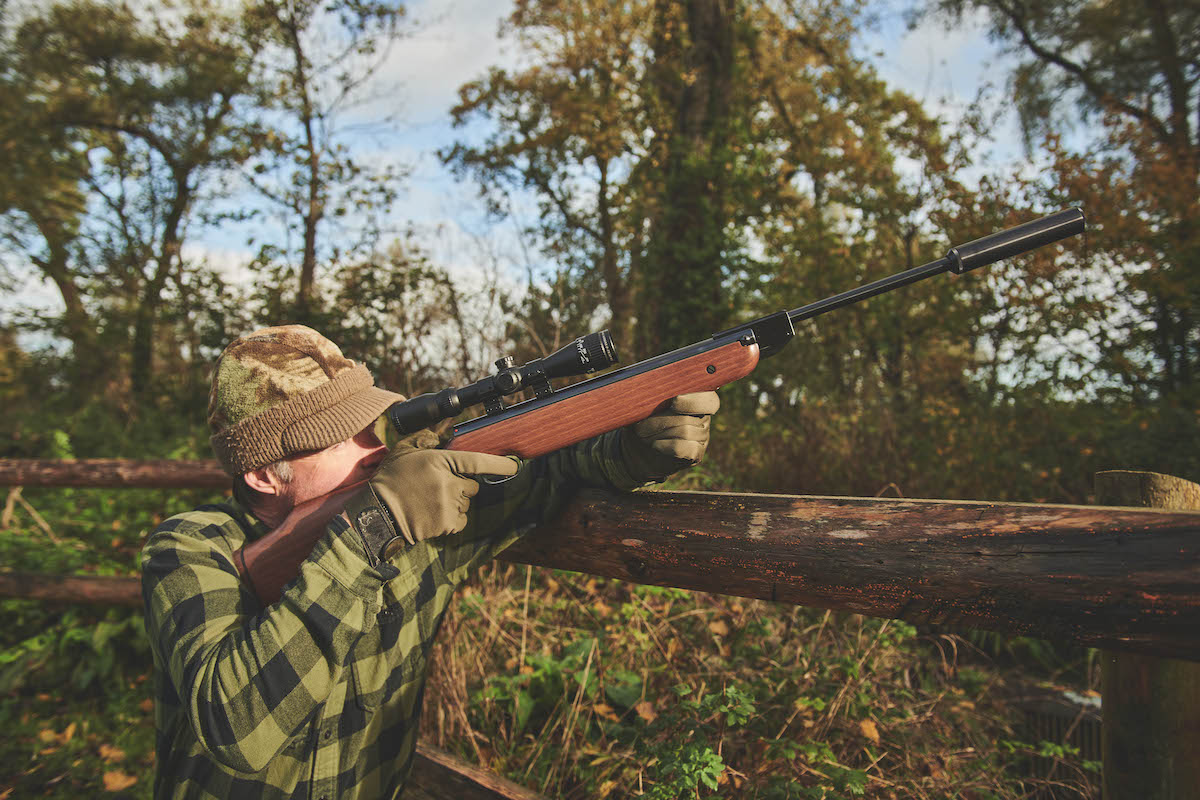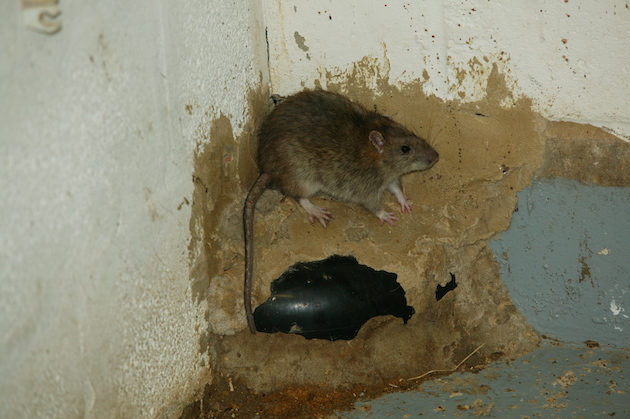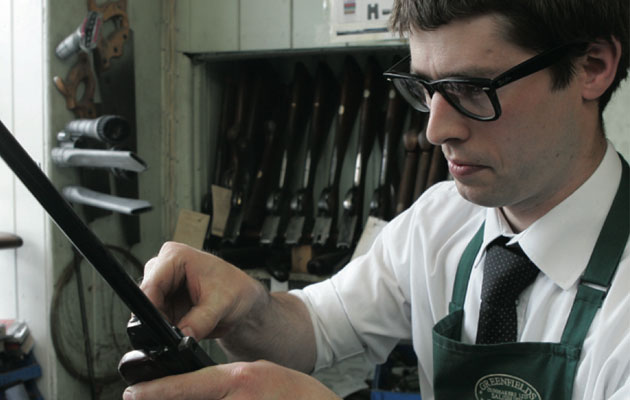Airgun laws in the UK as they stand Airgun shooters are being urged to conform with new legislation relating to…
Win CENS ProFlex DX5 earplugs worth £1,149 – enter here
Why airgunning is the most noble of shooting sports
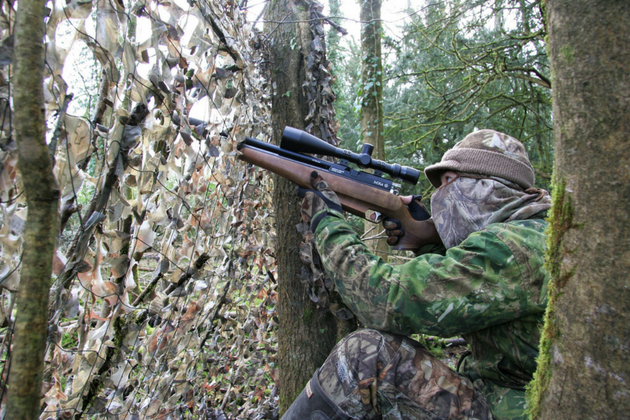
Setting up airgunning as the noblest of shooting sports probably sounds like a tall order to many — it certainly does to me.
Airgun shooters wear funny clothes, we get excited about shooting rats and grey squirrels and we don’t like to pay for our sport.
More to airgun shooters than meets the eye
But there is a so much more to airgun shooting than the casual observer might first realise.
It demands an extremely high level of fieldcraft and marksmanship. Add to that the fact that most of us provide a free pest control service, for which we are sometimes rewarded with fine free-range meat for the pot, and this peculiar pastime suddenly begins to sound a great deal nobler than one might first imagine.
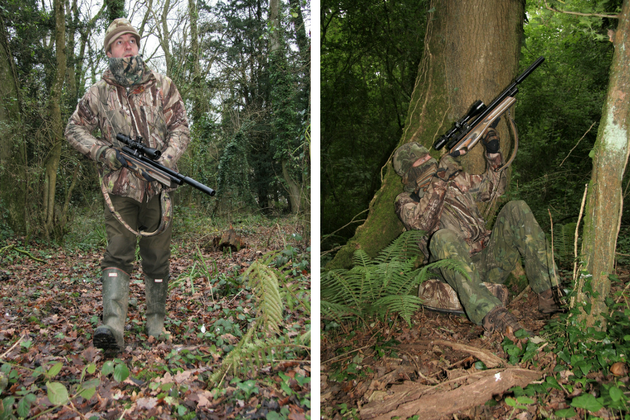
The airgun shooter takes his sport wherever and whenever he can, and is always prepared
Airgun shooters deal mostly with extremely wary, wild quarry; animals that live on their wits and have learned to steer well clear of humans. Head out reeking of aftershave or with car keys jangling in your pocket and you won’t stand a chance of creeping within range of untrusting rabbits. And it’s a similar case with sharp-eyed corvids and skittish woodpigeons, which take flight as the slightest hint of human presence in their woodland haunts.
However, the determined airgunner still needs to get uncommonly close to his or her quarry in order to take telling shots. Our guns are whisper-quiet, a trait that makes them well-suited to covert pest control, but their limited power makes them useless at extreme range. I like to be within 30 metres when I’m targeting live quarry – and preferably even closer.
Airgun shooters have to engineer situations that get them on very close terms with their wily quarry. We hone our stalking skills and learn how to use the wind to sneak up on unsuspecting rabbits, we build discreet hides and utilise decoys to catch woodpigeon, crows and magpies off guard, and we use night vision and baiting tactics to pick off fidgety rats as they go about their nocturnal rounds.
Most of these techniques demand an in-depth knowledge of the seasonal and day-to-day habits of whatever quarry we might be targeting. We also need to be in touch with the ground we shoot over in order to pre-empt the influence that factors such as food sources and weather conditions are likely to have on the behaviour of our quarry. Experience reigns supreme and the best airgun shooters are likely to have endured countless blank sessions while honing their craft.
Night-time ratting with an air rifle
Ratting in the dark using night vision optics
Maintain your airgun with this easy step-by-step guide
Learn how to maintain your airgun at home with this photographic step-by-step guide
Airgun shooters need to be crack shots
A close understanding of wildlife and the countryside is vital, but the successful airgun shooter also needs to be a crack shot. Most of the species we target are very small and therefore present a tiny kill zone. To ensure that our little projectile strikes a vital organ, responsible airgun shooters should limit their maximum shooting distance to a range at which they can confidently and consistently group pellets within a circle the size of a £1 coin.
That level of accuracy is challenging enough over a fixed range, but the fact that airgun pellets tend to have a distinctly curved trajectory means we also need to have a detailed understanding of our ammunition’s downrange performance.
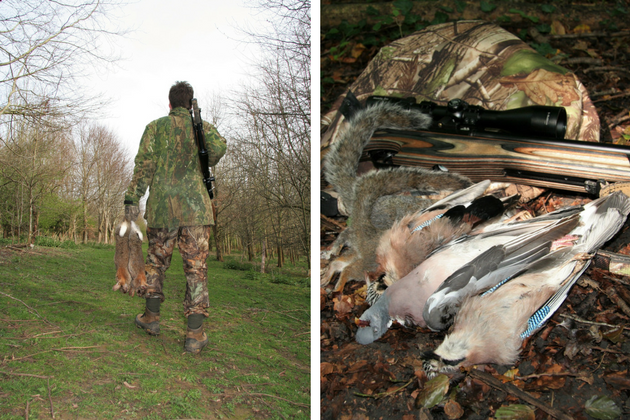
Responsible airgun shooters eat any edible quarry and do their best to make use of fur and feather
Once we’ve got that mastered, there is the matter of precise range estimation so that correct hold-over and hold-under can be applied to compensate for the rise and fall of the pellet.
- Airgun shooters have a reputation for spending long hours punching paper on the practice range and it’s a routine that pays off.
- A sound understanding of the performance of our kit and carefully honed fieldcraft skills combine to create a scenario that virtually guarantees clean kills on quarry that doesn’t usually even realise we are there. A disciplined airgun shooter doesn’t hope for a swift dispatch when he or she pulls the trigger but expects it, otherwise the shot is left. Airgun shooters don’t strive for ‘sporting’ shots that all too often carry a risk of wounding, we strive for telling shots.
- Airgunners may not usually pay for our shooting but we do offer a free pest control service in exchange for permission to pursue our sport over fields, in woodland and around the farmyard. I kill hundreds upon hundreds of grass-gobbling rabbits, crop-raiding woodpigeons, bark-stripping grey squirrels, nest-robbing corvids and disease-spreading rats every year. My grey squirrel tally for 2017 was around 300 and I must have shot twice as many rats.
- Most of the time, though, our bags are modest. Half a dozen rabbits or three or four woodpigeon is a good result on most airgun outings and for that reason edible quarry is always valued. I can’t imagine the airgun community ever having to worry about bag disposal.
- There is no denying that there are exceptions to the rule, and one is too many, but I would argue that responsible and conscientious airgun shooters are a fine bunch of people and our sport is indeed a noble one – and the fact that it’s so accessible and can be enjoyed right through the year is a wonderful bonus.
Related Articles
Get the latest news delivered direct to your door
Subscribe to Shooting Times & Country
Discover the ultimate companion for field sports enthusiasts with Shooting Times & Country Magazine, the UK’s leading weekly publication that has been at the forefront of shooting culture since 1882. Subscribers gain access to expert tips, comprehensive gear reviews, seasonal advice and a vibrant community of like-minded shooters.
Save on shop price when you subscribe with weekly issues featuring in-depth articles on gundog training, exclusive member offers and access to the digital back issue library. A Shooting Times & Country subscription is more than a magazine, don’t just read about the countryside; immerse yourself in its most authoritative and engaging publication.






